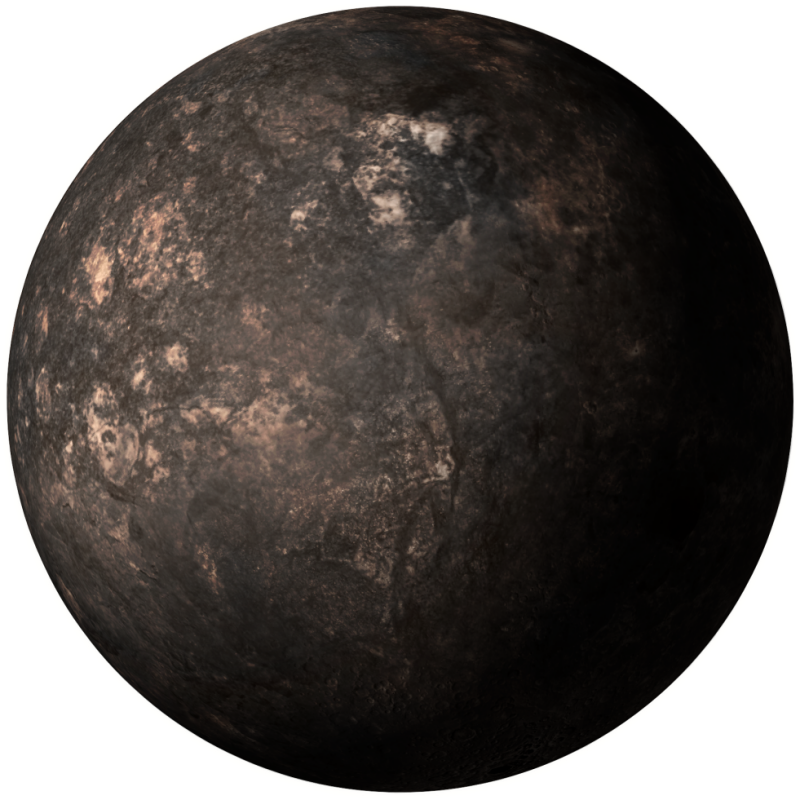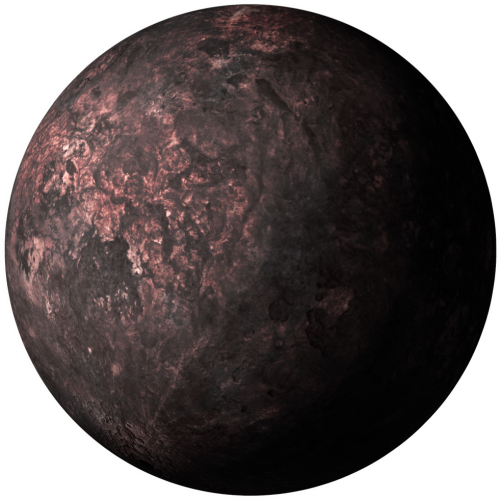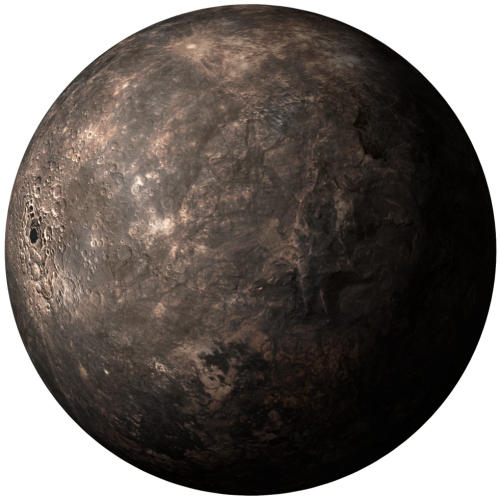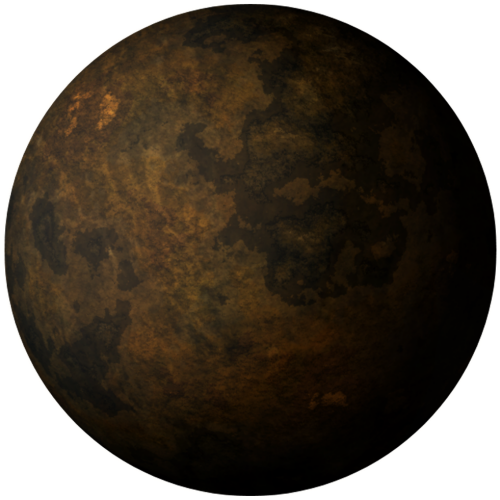When a highly eccentric orbit causes a Class U planet to
spiral into the hot zone of a star system, it eventually settles
into orbit perilously close to the parent star. This proximity
typically results in gravitational forces stripping the
atmosphere from the planet; the end result is a Class X:
Chthonian planet, which is nothing more than the exposed
core of the Class U world.
In stark contrast to a Class U planet, Chthonian worlds are
tiny, measuring no more than 10,000 kilometers in diameter.
Any atmosphere that remains is tenuous at best, and
composed primarily of hydrogen and helium. As a result, the
daylight side of the planet is scorched by temperatures up to
800°C, but without an atmosphere, none of this heat is
retained, and nighttime temperatures may drop as low as
-260°C.
Chthonian worlds are utterly barren, but rich in natural
resources. Most have surfaces composed of iron and
deuterium, but some are composed almost entirely of
diamond. While they are wholly unsuitable for life of any
kind, short-term mining operations are often established on
Class X planets to gather the valuable materials proffered by
these tiny worlds before it’s too late—Chthonian worlds are
extremely short-lived. Doomed by the inward spiral set into
motion in the cold zone, Class X planets are ultimately
absorbed by their parent star and completely obliterated.
spiral into the hot zone of a star system, it eventually settles
into orbit perilously close to the parent star. This proximity
typically results in gravitational forces stripping the
atmosphere from the planet; the end result is a Class X:
Chthonian planet, which is nothing more than the exposed
core of the Class U world.
In stark contrast to a Class U planet, Chthonian worlds are
tiny, measuring no more than 10,000 kilometers in diameter.
Any atmosphere that remains is tenuous at best, and
composed primarily of hydrogen and helium. As a result, the
daylight side of the planet is scorched by temperatures up to
800°C, but without an atmosphere, none of this heat is
retained, and nighttime temperatures may drop as low as
-260°C.
Chthonian worlds are utterly barren, but rich in natural
resources. Most have surfaces composed of iron and
deuterium, but some are composed almost entirely of
diamond. While they are wholly unsuitable for life of any
kind, short-term mining operations are often established on
Class X planets to gather the valuable materials proffered by
these tiny worlds before it’s too late—Chthonian worlds are
extremely short-lived. Doomed by the inward spiral set into
motion in the cold zone, Class X planets are ultimately
absorbed by their parent star and completely obliterated.





| AGE DIAMETER LOCATION ATMOSPHERE SURFACE INNER CORE AVERAGE TEMP EVOLUTION HABITABILITY |
3-10 billion years old
1,000 - 10,000 kilometers
hot zone
none
barren, rich in resources
molten iron
-260°C - 800°C
ultimately destroyed by parent star
uninhabitable
1,000 - 10,000 kilometers
hot zone
none
barren, rich in resources
molten iron
-260°C - 800°C
ultimately destroyed by parent star
uninhabitable